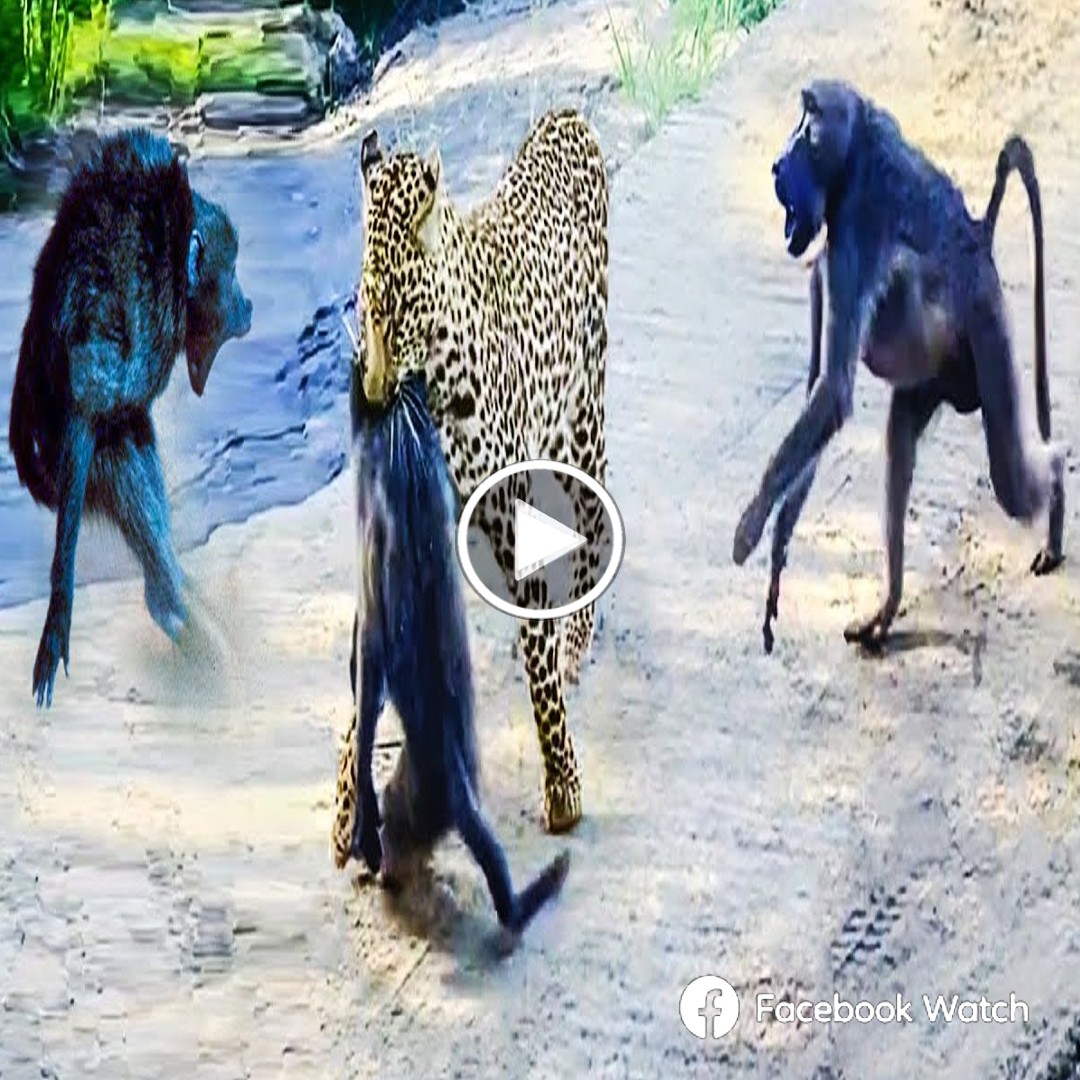Baboons are still difficult prey for leopards. According to research from the Journal of Animal Behavior, in 87% of encounters between baboons and predators, baboons tend to defend themselves by counterattacking rather than running away.
Baboons live in troops with complex social structures, typically consisting of 50 to 200 individuals. They can use their numerical advantage to intimidate and chase leopards, even before the leopard has begun its hunt.

Interestingly, baboons have been known to steal leopard cubs. Although hard to believe, this actually happened in 2020 in Pilanesberg Private Game Reserve.
A male baboon climbed a tree and captured a leopard cub. Despite the cub’s potential to become a formidable predator in the future, the baboon seemed to like it and wanted to take it back to the troop to raise. This unusual act likely stems from the baboon’s instinct to protect and care for its own cubs.

A similar situation occurred in Kruger, which was an amazing yet bitter scene because the leopard cub would not survive more than a few hours away from its mother.
Baboons also face dangers from leopards hunting their young. Baboons can give birth all year round, with a gestation period of about six months. The young are well cared for by the mother and other members of the troop.
In a documented case, the presence of a native leopard caused significant stress among the baboons, especially for a baboon cub named Prince. Separated from its mother in the chaos, Prince came face to face with the leopard.

Luckily for Prince, the leopard’s target was not a tiny cub but an adult baboon. Prince’s life was spared at the cost of another member of its troop.
In another remarkable incident, a leopard named Lakadima encountered a day-old baboon. Instead of seeing the baboon as food, the predator suddenly felt compassion and protected the baboon cub from a hyena.
The baboon cub even began to follow Lakadima as if she were its mother. This rare behavior highlights the complex and often unexpected interactions between predators and their prey in the wild.
